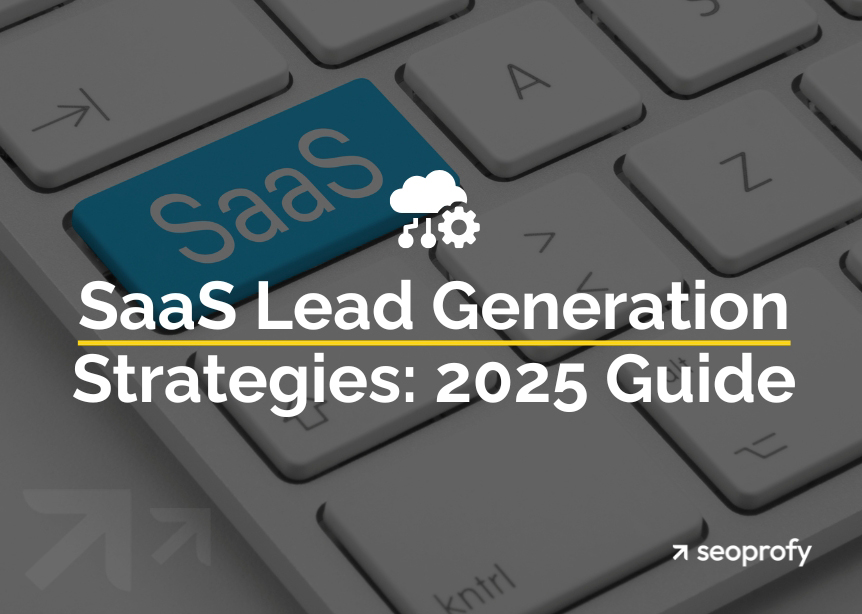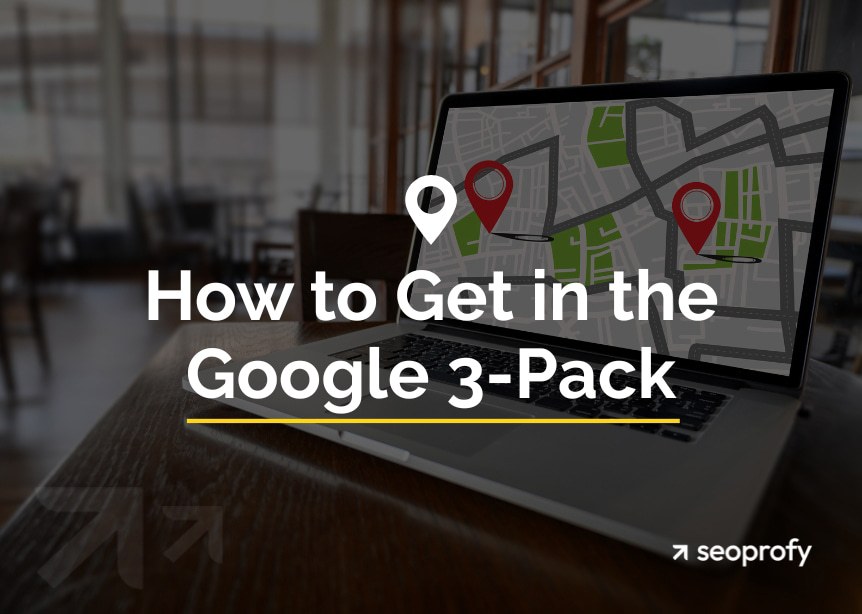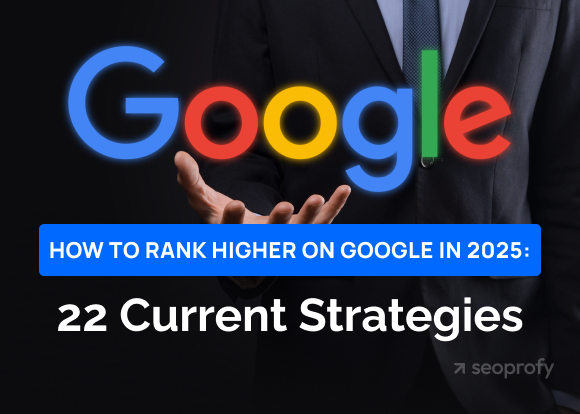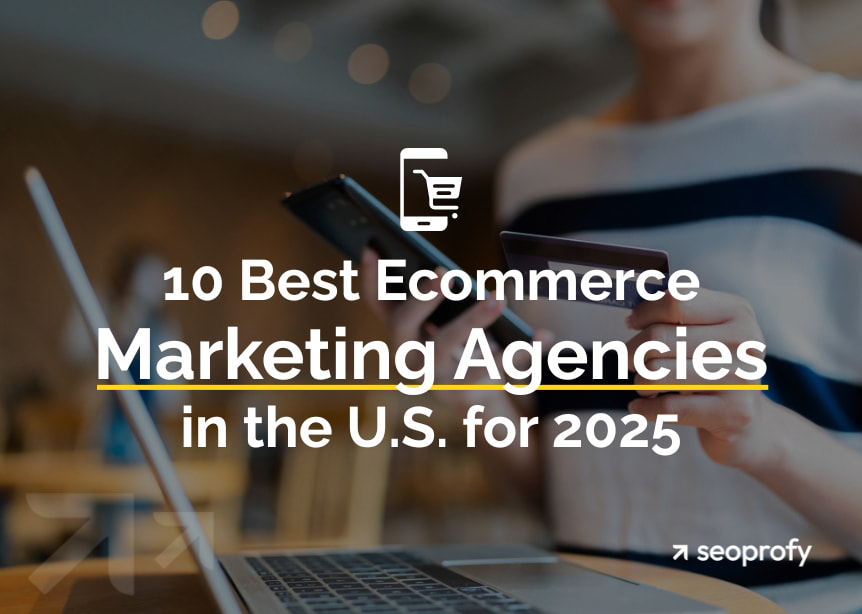Keyword research for ecommerce is a psychological exercise in knowing your buyer’s intent. Tracking their search intent is the best way to create content that leads them to a sale, and mapping the right keywords can help you guide them to your products.
Your strategy must follow the buyer’s journey and, more importantly, direct them to your product or service as the solution. Here, we’ll discuss how to do keyword research for ecommerce to create a strategy that will lead to better positions in search engine results and increased sales.
- The buyer’s journey begins with a search — knowing what and why they search is key to turning clicks into customers.
- Mapping buyer demand is an ongoing strategy. Regular audits on key metrics, such as search volume, KD, and CPC, help your keywords evolve in line with your audience.
- Keyword hubs enhance your website’s SEO clarity and navigation by clustering terms around core products.
- TOFU, MOFU, and BOFU mapping help categorize your keyword research based on your buyer’s intent.
- Be cautious of common pitfalls, such as overusing search volume-focused keywords and overlooking SERP features.
What Is Buyer Demand, and Why Does It Matter for Ecommerce SEO?
In search engine optimization, buyer demand is expressed through the keywords people use to find products through Google Search or other search engines. SEO is aimed at improving your store’s organic search traffic and conversion rates by cleverly implementing keywords into the content of your pages.
Every keyword’s frequency and intent indicate what buyers are actively looking for — and that demand shapes what products rise to the top. When enough people search for the same thing, it shows growing interest, and the relevant keywords show higher search volume. These search patterns give ecommerce brands real-time clues about what products are trending. That’s where keyword research for ecommerce starts.
High-volume keywords can bring in a lot of search traffic, but they come with heavy competition and can be difficult to rank for. Because they are often broad, they may attract users who aren’t ready to convert. Trying to rank for the most competitive terms could drive up SEO costs without leading to more sales.
Why Search Intent Matters in SEO
People can search for vastly different types of content with very similar queries. And if a website on the search engine results page (SERP) doesn’t offer the right type of content, they won’t visit it, and if they do, they are unlikely to complete a purchase.
For example, a person googling “how to choose a coffee maker” is not necessarily looking for a product page. They want to learn more about making the right choice, and they will be frustrated if they are taken to a page that just shows them a product. That’s why understanding search intent is critical in ecommerce SEO.
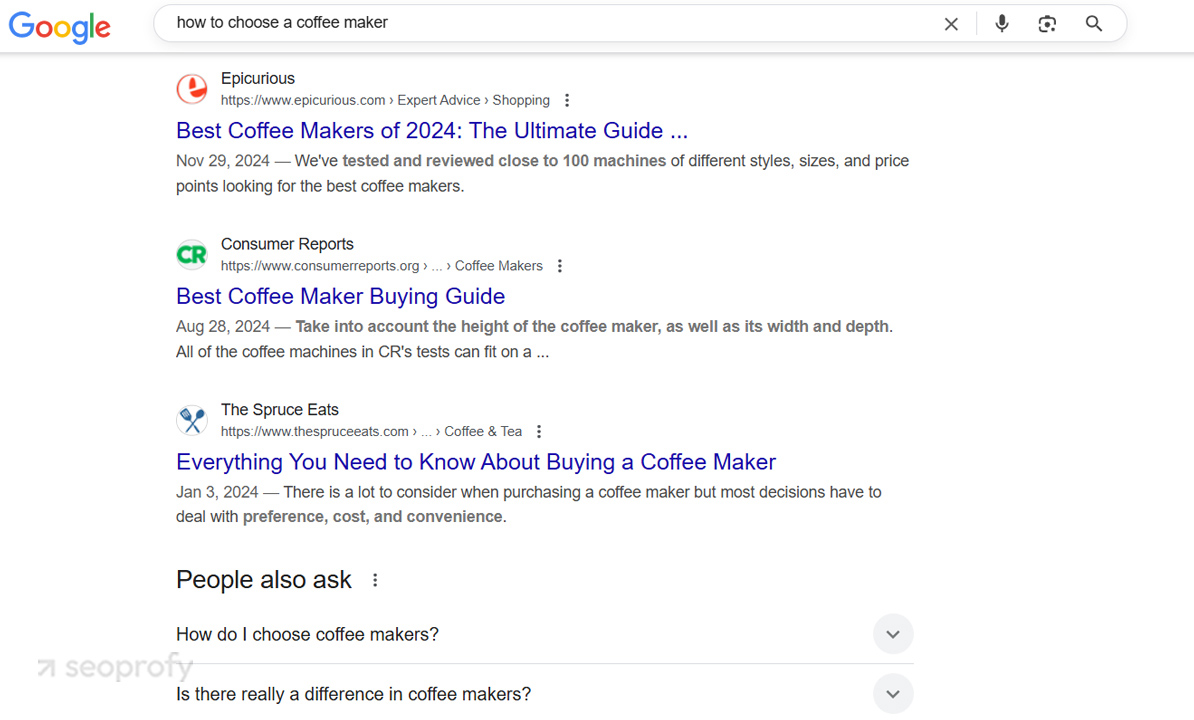
There are three core types of search intent:
- Informational: “What is a cold brew press?”
- Commercial: “Best cold brew press for beginners”
- Transactional: “Buy French press under $50”
In keyword research for ecommerce, you need to carefully analyze this aspect. High-intent keywords have a clear purpose within the buyer’s journey and often point users closer to making a purchase. Words like “buy,” “price,” “shop,” or “comparison” give clues about that intent.
Note that short queries with broad terms, such as “buy a cold brew press,” might still be too general and competitive, although they do have a high monthly search volume. Longer, more specific queries called long-tail keywords bring in less traffic, but the visitors who use them are more likely to convert. Such keywords related to your products should be the center point of your plan.
Still, the fact that your website is an online store doesn’t mean that you only need to target commercial and transactional keywords. A content strategy for ecommerce can also include informational queries to win the interest of people who are not yet ready to buy.
How to Map Buyer Demand with Ecommerce Keyword Research
When you know what your buyers are searching for and why, you can use relevant keywords to bring your ecommerce business to the top of search engine results pages at the right moment. To map buyer demand, you need to create a keyword list.
Find Keyword Ideas
The keyword research process starts with identifying the search terms most relevant for your niche. Look at how your products or services fit into the current search trends. What are your customers searching for?
First, you need to determine broad keywords relevant to your business or specific products. You can do this by simply imagining what you would type in the search bar to find them. After that, you need to access a keyword tool of your choice to find more specific queries and analyze them.
Analyze Keywords Using SEO Tools
Ecommerce keyword research tools like Ahrefs, Google Keyword Planner, and Semrush help you find all the keywords that match what your potential customers type into the search bar. Here’s what they offer:
- Ahrefs: An SEO toolset that includes a paid keyword research tool. It’s also great for keeping tabs on competitors and tracking backlinks.
- Semrush: A platform offering great features for tracking paid and organic keywords and checking how your content compares to your competitors.
- Google Keyword Planner: A completely free keyword research tool provided by Google that gives users basic functionality, but it’s primarily designed for paid advertising with a Google Ads account.
For example, in Semrush, you need to go to the Keyword Magic Tool and enter the chosen term. After that, you’ll see a list of keyword suggestions and their metrics. In the next section, we’ll explain in more detail what you should be looking for here.
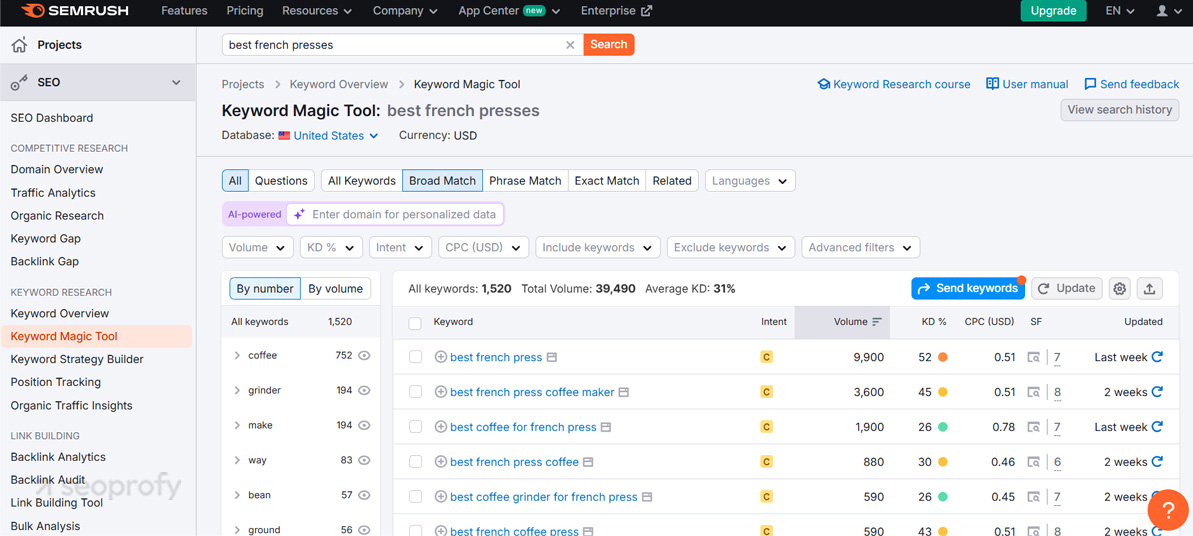
Focus on Keyword Data That Matters in Ecommerce SEO
Not all of the words and phrases you see should be used in your content. But how do you choose the right ones?
The most important thing is, of course, their relevance to your products, but there are a few metrics that you should also consider. These metrics make sure that you target keywords that can bring in traffic and are not overly competitive:
- Search Volume: Search volume tells how often people search for a specific keyword. High volume means high demand and more organic traffic potential (more visitors coming from search results). However, more specific, conversion-ready keywords will have a lower search volume.
- Keyword Difficulty (KD): The keyword difficulty score tells you how hard it is to rank organically. A higher KD can occur because more competitors use those same words to rank organically. Lower KD represents easier targets, so it may help to focus your research on these lower-difficulty keywords, especially if your website is new.
- Cost per Click (CPC): This is the average paid advertisement cost per click. Those looking into paid advertising can use it to estimate the total campaign cost and identify keywords that are less expensive.
Some SEO tools, such as Semrush, also show the intent of the search phrases alongside these metrics:
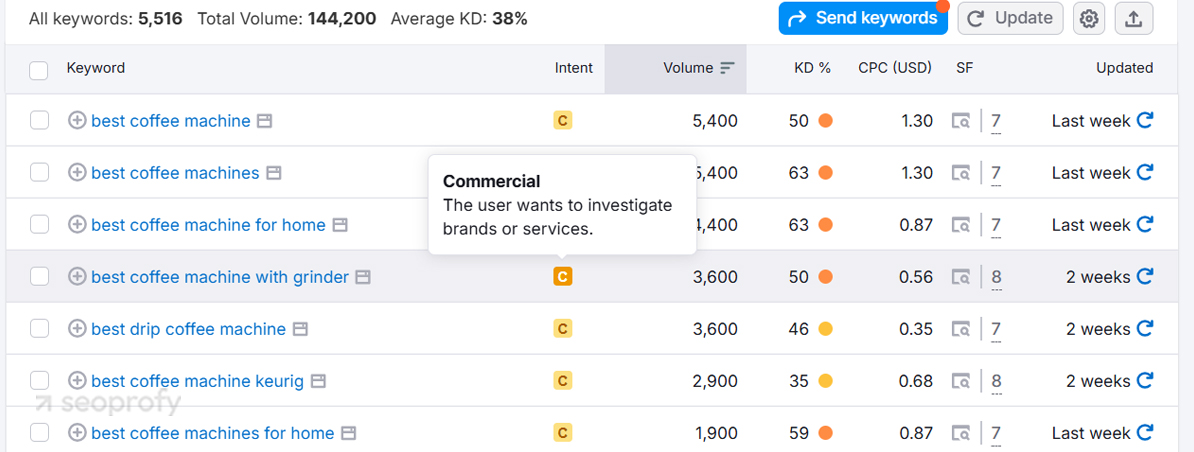
You can also simply look at the SERP and the types of pages it contains.
Start with seed keywords (fundamental terms or phrases that usually just name the type of product or a topic) and sort them according to search intent, relevant KD and CPC metrics, and search volume. As you go through relevant search terms, narrow them down and prioritize the ones that show a buyer is ready to take action.
For a comprehensive ecommerce SEO strategy, look for long-tail keywords and related phrases to target more specific searches. For example, Semrush offers Keyword Ideas. The tool suggests different variations and questions that you could explore:
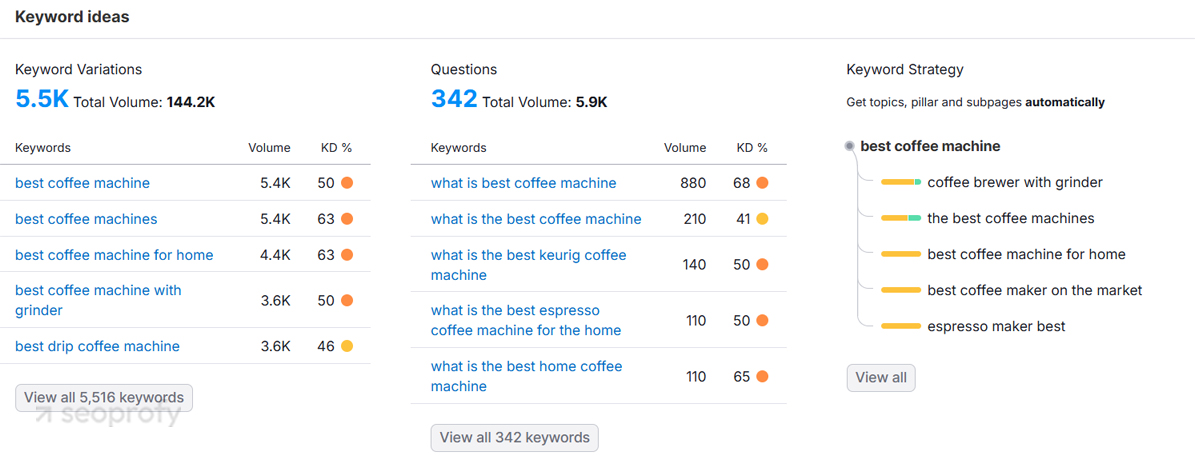
Building Keyword Hubs to Capture Buyer Intent
When doing keyword research for ecommerce, gather related keywords into groups according to the topic. These groups, also called keyword clusters or content hubs, will help you create a content strategy and organize your ecommerce store.
They can contain terms with different intents centered around a certain topic. The central product or category is surrounded by subtopics, questions, and related categories that reinforce its main theme. You will then be able to create collections of pages to rank for these keywords.
With well-researched hubs, you can guide potential buyers through different stages of the sales journey while building trust. Here’s an example:
Let’s say you sell coffee equipment — your keyword hub might be “French Presses.” Guides like “How to Use a French Press,” “Best Grinds for a French Press,” and “Top French Presses Under $50” can be used to expand your website’s content and spark the buyer’s curiosity about your products.
Each hub should be used to hone in on your buyer’s behaviors, and keyword research helps narrow down what behaviors are driving sales beyond the usual hard-sell products.
Most of the magic behind keyword hubs comes from internal linking, which connects the main topic hub with your website’s subtopics and products. These internal links can reinforce your website’s navigation and provide your buyers with a smoother shopping experience. They also help web crawlers access your website’s content and products for ranking.
For example, KitchenAid offers an article titled “Buying a Coffee Maker: A Guide” that includes different types of internal links throughout the text:
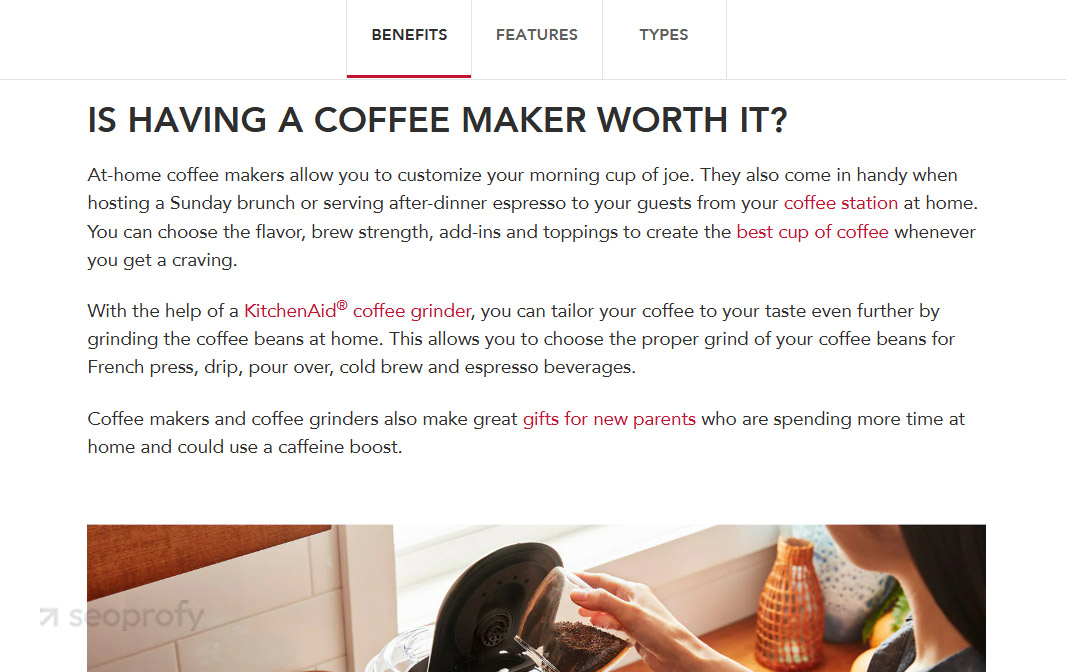
For a more technical breakdown of website links and content pages, Google has an entire page dedicated to structuring ecommerce websites, which you can check out here. It’s a helpful resource when doing keyword research for ecommerce, especially if you’re trying to organize your online store in a way that supports better search results.
Classifying Keywords by Funnel Stage: TOFU, MOFU, BOFU
Not every piece of content on your website has to be aimed at selling a product directly. Some visitors may not be ready to purchase immediately, but you can still capture their attention and maybe even motivate them to make the decision quicker with the right blog posts or articles tailored to their journey.
The buyer’s journey can also be depicted as a funnel. The conversion funnel, also known as funnel stages, is a model that tracks customers’ consideration and purchase process so you can deliver the right experience at the right time.
In conversion funnels, the audience size decreases as it goes down, narrowing to those who want to buy your products. Learning where they are located in the funnel can help you organize your content hub, and it works both ways. Keyword research can guide your funnel strategy, and analyzing the funnel can give you more keyword opportunities.
In any conversion funnel, you should focus on tracking your buyers and keyword searches at these three stages:
TOFU: Top of Funnel or “Just Looking” Phase
This stage is about awareness. Your buyers are researching and exploring their options. Keyword hubs for this stage are made to show authority without selling, but these pages can contain links to relevant products.
- Content type: Blog posts, beginner guides, explainer content.
- Keyword style: “How to clean white sneakers,” “what is a cold brew press,” “gift ideas for coffee lovers.”
- Intent level: Low (but important for attracting attention early).
- Target pages: Blog or educational content.
Here’s an example for “how to choose coffee beans”:
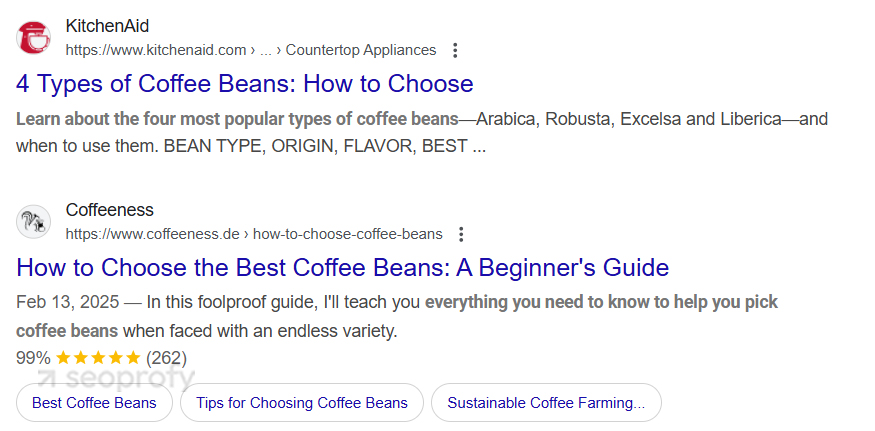
MOFU: Middle of Funnel or “I’m Interested” Phase
Within the middle, you have more deeply engaged audiences with your products. For those in the middle, your website’s content hubs are meant to guide your interested buyers to become customers.
The real challenge comes from maintaining that interest. For buyers stuck in the middle, your goal is to harness and nurture your relationship by using keywords that create a more direct engagement rather than brand awareness.
- Content type: Category pages, product comparison pages, listicles.
- Keyword style: “Best cold brew makers,” “French press vs. Aeropress,” “coffee gear under $100.”
- Intent level: Medium (buyers are getting closer).
- Target pages: Category, collection, or comparison-focused content.
Continuing with our coffee beans example, the buyer might want to look for comparisons like “arabica vs. robusta beans”:
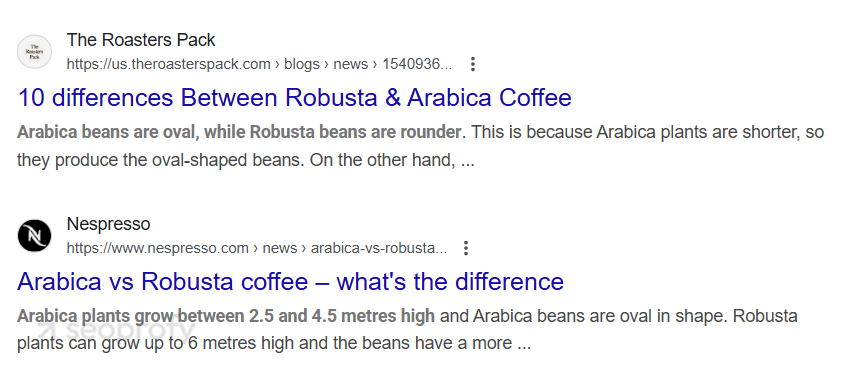
BOFU: Bottom of Funnel or “Ready to Buy” Phase
The bottom stage is about actual conversion, and it’s the most challenging stage within the buyer’s funnel. At this point, your buyers are considering buying rather than just looking.
- Content type: Product pages, discount/sale pages, direct landing pages.
- Keyword style: “Buy Hario cold brew bottle,” “Bodum French press 8 cup sale,” “cold brew press with glass carafe.”
- Intent level: High (transactional).
- Target pages: Product pages, conversion-focused content.
Having read about the types of coffee beans, the buyer is now ready to shop, and they will look for pages like these:
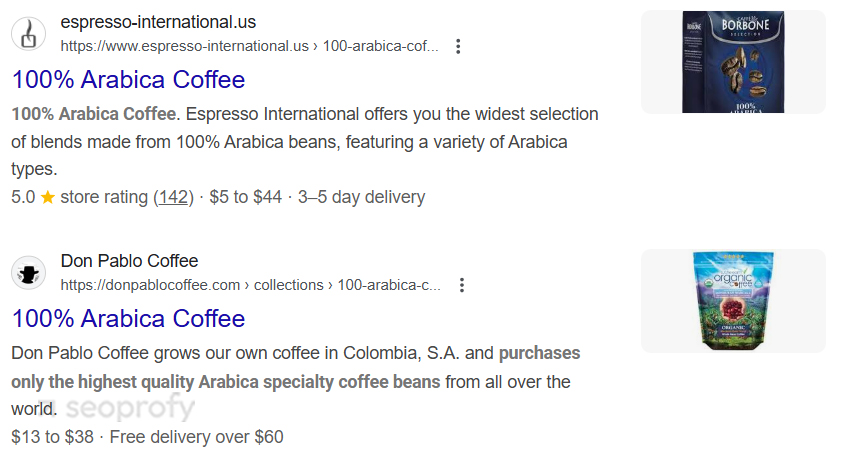
The BOFU stage is hard to finesse, as you cannot force anyone to click buy. Your keyword research should focus on keywords that show direct buyer-ready behavior. If you’re unsure where to begin, it helps to look into SEO services for ecommerce to guide your funnel and keyword choices.
How to Map Keywords to Product, Category, and Content Pages
Effective keyword research is an intensive but worthwhile process. It takes effort, but it pays off. It helps you connect the right pages to the right search intent, making your content more useful to buyers and search engines.
Practical mapping starts with identifying your ecommerce site’s topic areas and keyword clusters, as described above. From there, we recommend organizing them based on a selection of categories. Here’s a brief overview of those categories:
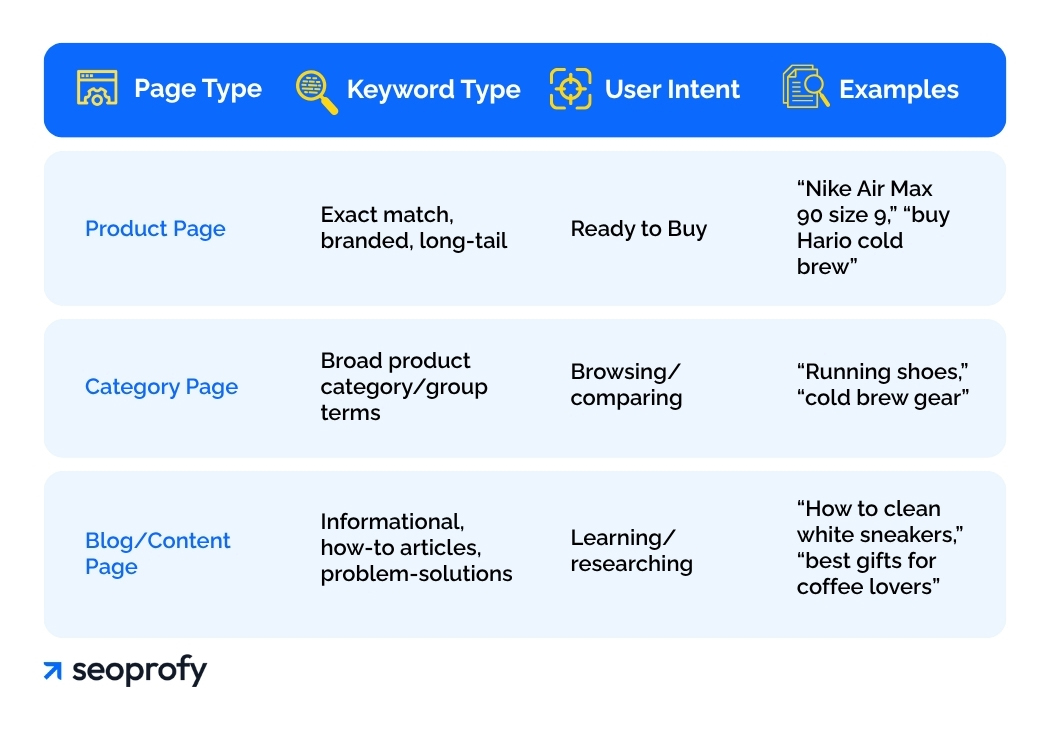
| Page Type | Keyword Type | User Intent | Examples |
| Product Page | Exact match, branded, long-tail | Ready to buy | “Nike Air Max 90 size 9,” “buy Hario cold brew” |
| Category Page | Broad product category/group terms | Browsing/comparing | “Running shoes,” “cold brew gear” |
| Blog/Content Page | Informational, how-to articles, problem-solutions | Learning/researching | “How to clean white sneakers,” “best gifts for coffee lovers” |
During this stage, be selective about what keywords will offer the most value to your keyword hub. Examine the current buyer demand for your products and analyze the metrics — look for terms that offer optimal levels of relevance, traffic, and difficulty.
To make the process more efficient, use a spreadsheet. Here’s how you could organize it:

Common Pitfalls When Mapping Buyer Demand
Generally, ecommerce is one of the most challenging industries for search engine optimization. From choosing the best ecommerce platforms for SEO to handling complex site architecture and product demand fluctuations, it’s easy to make mistakes. The process of keyword research for ecommerce is full of potential pitfalls that can derail your whole strategy.
Volume Traps
Just because a keyword shows plenty of searches doesn’t mean it will bring you sales. If you use too many high-volume queries, your site will be more likely to attract browser attention rather than potential buyers. Instead, try to balance your strategy with high-intent keywords, even if they have lower volume. Compare the queries “coffee maker” and “Cuisinart cold brew coffee maker”:


Misaligned Targets
A common mistake people make is placing keywords at the wrong targets. If they are placed incorrectly, you’ll experience less engagement with your content. For example, this page ranks for “types of coffee makers” but has an unsuitable intent:

When building your hub, try organizing your keywords by funnel stage (TOFU, MOFU, BOFU) and match them to pages that meet those needs.
Ignoring SERP Features
SERPs can provide more context about keywords through their features. Does the search engine show product carousels, featured snippets, or videos? These features give clues about what content Google favors for a given keyword. Pay attention to them, and try to plan your pages and optimize your content with structured data, direct answers, relevant media, etc.
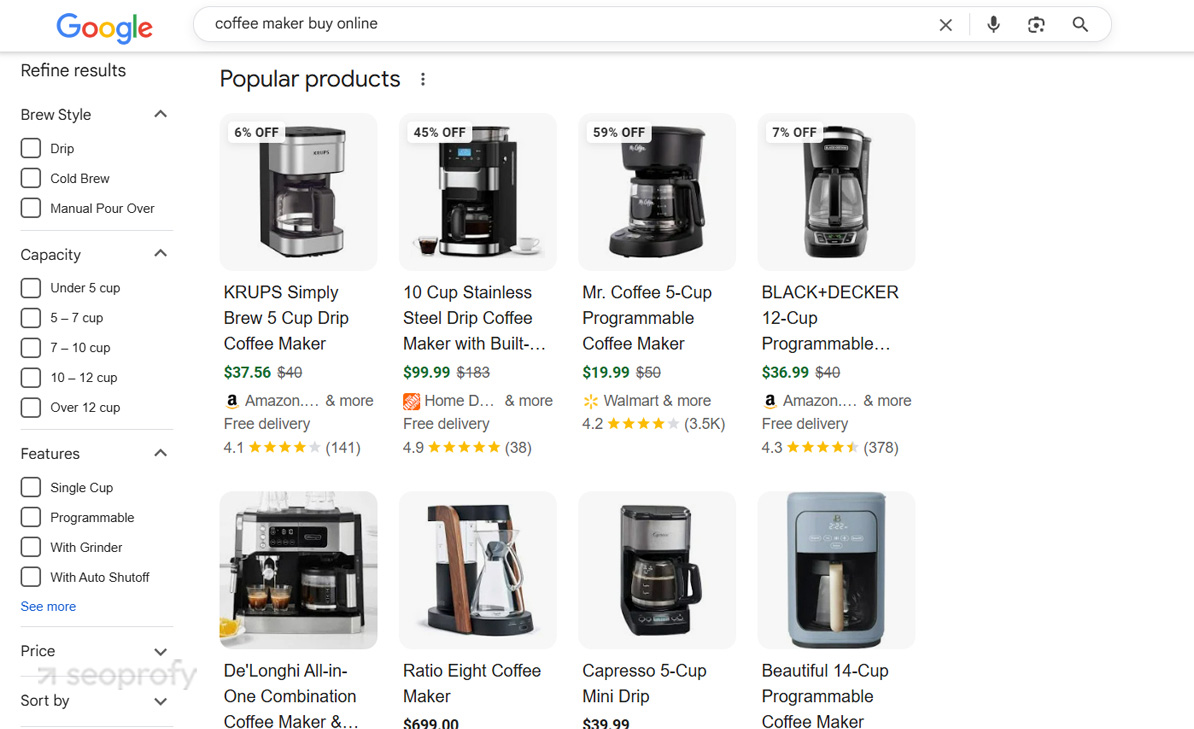
Final Thoughts: Mastering Buyer Demand Mapping for Long-Term Growth
To achieve better SERP rankings, you need to start with a good ecommerce SEO strategy. Keyword mapping, or assigning specific keywords to specific pages on a website, allows you to track your ecommerce store’s performance. It’s a powerful tool for learning how buyers progress from awareness to decision when shopping online.
Not ready to perform keyword research yourself? Our team at SeoProfy is here to help. We specialize in turning visitors into buyers — let’s grow your traffic and sales together. Contact us today!





